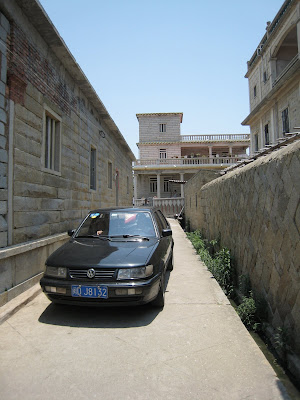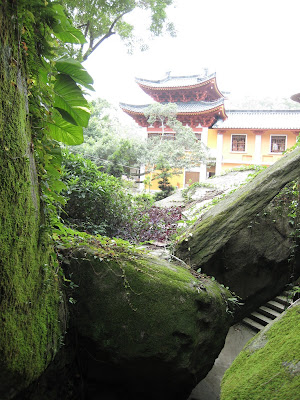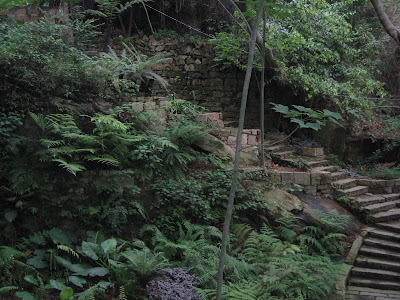Today we visited Hilda's mother, Magdalena's home town, which is about an hour and a half from Xiamen. It is called Shízhèn, which translates to "stone town". And indeed, the large majority of buildings are made out of stone. In the late 1930's/early 1940's, Magdalena came from the Philippines to visit her grandmother in Shizen, but ended up stranded due to the Japanese war with China and World War II. She spent ten years in Shízhèn (and Jimei, where she attended a residential high school).
Our first stop was Magdalena's elementary school. It was a beautiful old stone building. We were all surprised to find that it is currently a T-shirt factory.


Although Magdalena knew the way from her school to her home, with all the new construction, we had to ask directions several times. We drove down narrow stone streets, lined with stone houses. The stone houses used a variety of construction techniques and styles. After a couple of wrong turns, we eventually found our way.



Magdalena's Uncle (actually a cousin) and his family welcomed us with warm open arms. Almost immediately, coffee, tea, and snacks appeared.










My curiosity led me up onto the roof. There was some nice stonework. From the roof, I could see the wiring that brought electricity to all of the nearby buildings. I could also see everybody's water tanks. They all looked brand new. Without exception. Perhaps the result of a government program to reduce disease caused by contaminated drinking water. One looked like a brilliant space ship.




Our next stop was the local Buddhist temple on the beach. Although a very old temple, it had been renovated recently and the details were gorgeous!


|

|

It was lunchtime, which means that Chinese people would expect to eat lunch. We foreigners, though, are a wee bit unpredictable. The rocks along the shore at the far end of the beach were beckoning. Calliope, Hilda's nephew Anton, and I opted for some rock scrambling.








































